Nestled amidst the rugged Aravalli hills of Rajasthan, India, stands a colossal monument that whispers tales of unparalleled valor, sacrifice, and an enduring spirit – Benteng Chittorgarh. More than just a fort, it is a living chronicle of Rajput pride, a UNESCO World Heritage Site that continues to captivate historians, travelers, and dreamers alike. Its formidable walls, sprawling across 700 acres on a 180-meter-high hill, have witnessed sieges, triumphs, and the ultimate acts of defiance, making it an indispensable pilgrimage for anyone seeking to understand the soul of Indian history.
A Citadel Forged in Time: The Genesis of Chittorgarh
The origins of Benteng Chittorgarh are shrouded in a mix of historical fact and captivating legend. While some accounts attribute its construction to the Mauryan rulers in the 7th century CE, with King Chitrangada Mori often cited as its founder, local folklore weaves a more mythical narrative. It is said that Bhima, one of the legendary Pandava brothers from the Mahabharata epic, struck the ground with such force that a spring appeared, around which the fort was later built. Regardless of its exact genesis, the fort quickly rose to prominence, becoming the capital of the Mewar kingdom and a symbol of Rajput supremacy.
Throughout centuries, Chittorgarh was a coveted prize, besieged repeatedly by powerful empires. Its strategic location and formidable defenses made it a crucial stronghold, leading to some of the most dramatic chapters in Indian history. From Alauddin Khilji’s relentless pursuit in 1303 to Bahadur Shah of Gujarat’s invasion in 1535, and later, Emperor Akbar’s siege in 1568, Benteng Chittorgarh stood as a bastion of resistance, its walls echoing with the cries of war and the unwavering resolve of its defenders.
Architectural Marvel: A Fort Built for Eternity
The sheer scale and intricate design of Benteng Chittorgarh are a testament to the architectural prowess of its builders and the military genius of the Rajput rulers. The fort is famously approached through seven massive gateways or ‘Pols,’ each with its own historical significance and defensive features. These include Padan Pol, Bhairon Pol, Hanuman Pol, Ganesh Pol, Jorla Pol, Lakshman Pol, and finally, Ram Pol, the main entrance. These gates were not merely entry points; they were carefully designed to impede invading armies, with spiked doors to deter elephants and strategically placed watchtowers.
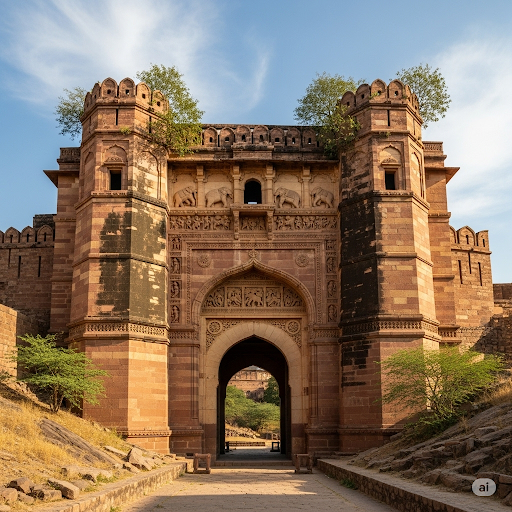
Benteng Chittorgarh
Once inside, the fort unfolds into a sprawling complex of palaces, temples, towers, and water bodies, each narrating a unique story. The fort’s unique fish-like shape, stretching approximately 5 km in length with a circumference of 13 km, allowed for extensive fortifications and a self-sufficient ecosystem within its walls. Remarkably, the fort once boasted 84 water bodies, with 22 still existing today, showcasing a sophisticated water harvesting system that sustained its inhabitants through prolonged sieges.
The Heart of Rajputana: Palaces of Power and Poetry
Among the countless structures within Benteng Chittorgarh, several stand out for their historical significance and architectural beauty.
Rana Kumbha Palace: This possibly oldest structure within the fort complex was the residence of Maharana Kumbha, a revered ruler who significantly expanded the fort and its influence. It’s believed to be the birthplace of Maharana Udai Singh, the founder of Udaipur, and the mystical poetess Mirabai. The palace, though largely in ruins, still exudes a haunting grandeur, with underground cellars where, according to legend, Rani Padmini and other women performed Jauhar.
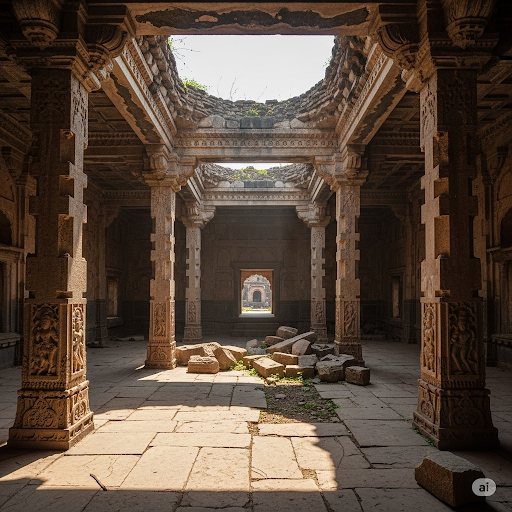
Padmini’s Palace: Perched amidst a serene water body, the three-storied white edifice of Padmini’s Palace is perhaps the most romantic and tragic symbol of Chittorgarh. It’s here, as the legend goes, that Alauddin Khilji was granted a glimpse of Rani Padmini’s reflection in a mirror, igniting his obsession and leading to the infamous siege of 1303. The palace, with its charming pavilions and tranquil surroundings, serves as a poignant reminder of the ultimate sacrifice made to preserve honor.
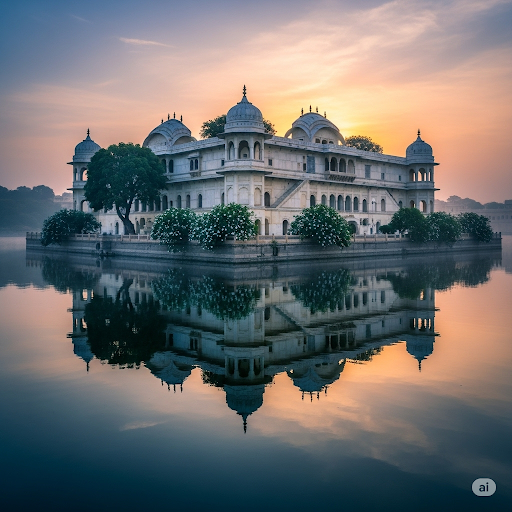
Fateh Prakash Palace: Built by Maharana Fateh Singh, this palace has been converted into a museum, offering a glimpse into Rajput history and culture. It houses an impressive collection of sculptures, artifacts, weapons, and frescoes, providing valuable insights into the lives of the rulers and the artistry of the era.
Towers of Triumph and Faith: Vijay Stambh and Kirti Stambh
No visit to Benteng Chittorgarh is complete without marveling at its two iconic towers, each a symbol of triumph and faith.
Vijay Stambh (Tower of Victory): Soaring 37 meters high with nine stories, the Vijay Stambh is a majestic monument built by Maharana Kumbha in the 15th century to commemorate his victory over the combined armies of Malwa and Gujarat. Adorned with intricate carvings of Hindu deities, mythological figures, and battle scenes, it stands as a powerful testament to Rajput military might and artistic expression. Visitors can climb its 157 steps for breathtaking panoramic views of the entire fort complex and the surrounding landscape.
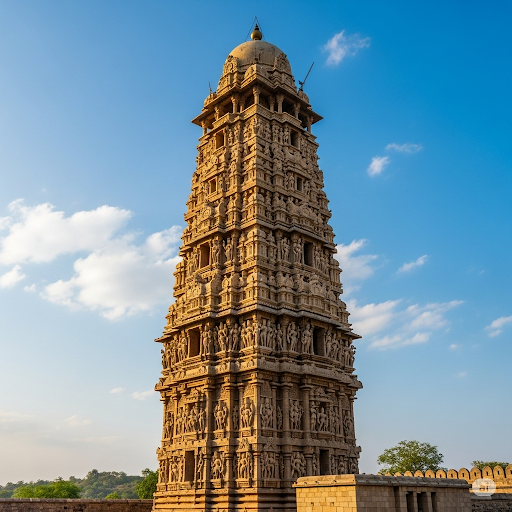
Kirti Stambh (Tower of Fame): Older than the Vijay Stambh, this 22-meter-high, seven-storied tower was built in the 12th century by a Jain merchant, Jijaji Rathod, and is dedicated to Adinath, the first Jain Tirthankara. It is adorned with numerous figures of Jain deities and is a significant pilgrimage site for the Jain community, reflecting the fort’s diverse cultural and religious heritage.
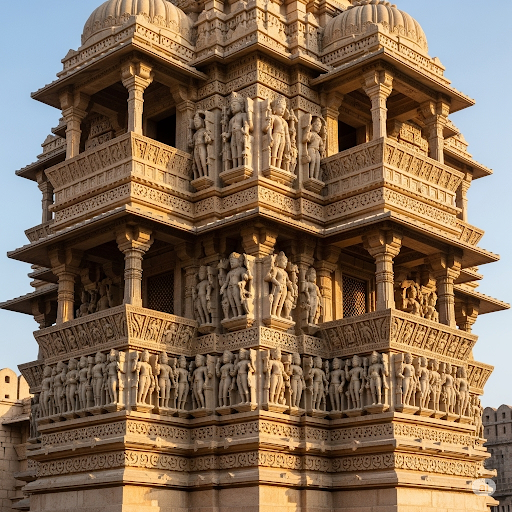
Legends That Live On: The Unforgettable Sagas of Chittorgarh
The stones of Benteng Chittorgarh are soaked in the blood and tears of countless individuals, giving rise to legends that have transcended time and become an intrinsic part of Indian folklore.
The Legend of Rani Padmini and Jauhar: This is perhaps the most widely known and emotionally charged tale associated with Chittorgarh. When Alauddin Khilji, consumed by desire for the exquisite Rani Padmini, laid siege to the fort, the Rajputs fought valiantly. However, facing inevitable defeat and unwilling to surrender to dishonor, Rani Padmini, along with thousands of other Rajput women, committed Jauhar (mass self-immolation) in a fiery pyre, choosing death over desecration. This act became a powerful symbol of Rajput honor, sacrifice, and the indomitable spirit of women.
The Sacrifice of Gora and Badal: During Alauddin Khilji’s siege, when Rana Ratan Singh was deceitfully captured, it was the valiant efforts of Gora, the queen’s uncle, and his nephew Badal, a mere teenager, who led the charge to rescue him. Though outnumbered, their bravery and strategic brilliance allowed the king to escape, though at the cost of their own lives. Their selfless sacrifice remains a poignant reminder of loyalty and courage.
Rani Karnavati and the Second Jauhar: In 1535, when Bahadur Shah of Gujarat attacked Chittorgarh, the fort faced another grave threat. Queen Karnavati, a widowed queen, appealed to the Mughal Emperor Humayun for help by sending him a Rakhi, a symbol of brotherly bond. While Humayun eventually arrived, it was too late. Faced with a similar predicament as Padmini, Rani Karnavati led another Jauhar with 13,000 women, while the Rajput men donned saffron robes and rode out to fight to the death.
The Valor of Jaimal and Patta: During Emperor Akbar’s siege in 1567, two young Rajput warriors, Jaimal Rathore, and Patta Sisodia, displayed extraordinary courage in defending the fort. Despite their youth, their leadership and ferocity in battle earned them immortal fame. Their statues, riding horses, stand at one of the fort’s entrances, a tribute to their unwavering spirit.
Mirabai, the Mystic Poetess: Chittorgarh is also deeply connected to the life of Mirabai, a 16th-century Rajput princess who became one of India’s most revered mystic poetesses and a devout follower of Lord Krishna. Despite societal and familial opposition, her unwavering devotion and spiritual songs became a cornerstone of the Bhakti movement. The Mirabai Temple within the fort is a peaceful sanctuary, resonating with her timeless hymns.
Benteng Chittorgarh Today: A Journey Through Living History
Today, Benteng Chittorgarh stands as a monument to resilience, a place where history comes alive with every step. Designated a UNESCO World Heritage Site as part of the “Hill Forts of Rajasthan,” it attracts thousands of visitors annually, each drawn by its dramatic past and architectural grandeur.
For tourists, exploring the fort is an immersive experience. Hiring a local guide is highly recommended to fully appreciate the intricate stories and historical nuances of each structure. The fort is open from sunrise to sunset, and the best time to visit is during the cooler months, from October to March.
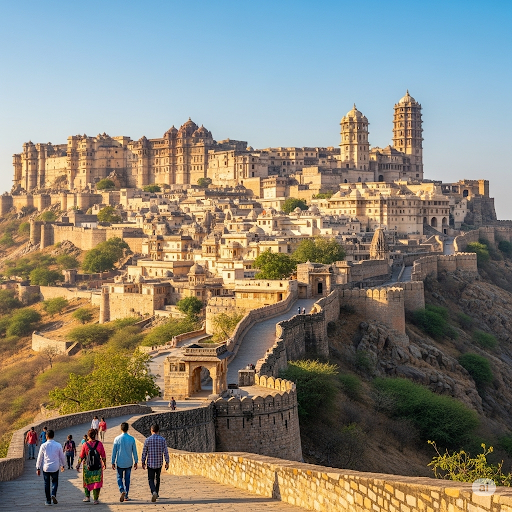
Beyond its historical significance, Benteng Chittorgarh offers breathtaking views of the surrounding plains. The evenings are particularly enchanting, with light and sound show at certain times of the year bringing the legends of the fort to life in vivid detail.
Planning Your Visit to Benteng Chittorgarh
- Getting There: Chittorgarh is well-connected by road and rail. The nearest airport is Udaipur, approximately 120 km away.
- Best Time to Visit: October to March offers pleasant weather for exploration.
- Duration of Visit: Allocate at least half a day, preferably a full day, to thoroughly explore the fort.
- What to Bring: Comfortable walking shoes, water, a hat, and sunscreen are essential.
- Local Culture: Respect local customs and traditions. Photography is generally allowed, but be mindful in certain temple areas.
Benteng Chittorgarh is more than just a collection of ancient stones; it is a profound testament to the human spirit’s capacity for courage, sacrifice, and unwavering dignity. As you walk through its ancient gateways and explore its ruined palaces, you don’t just see history; you feel it, a palpable sense of the heroic sagas that unfolded within these very walls. It is a journey into the heart of Rajputana, an encounter with a legacy that continues to inspire and awe, forever etched in the annals of time.


